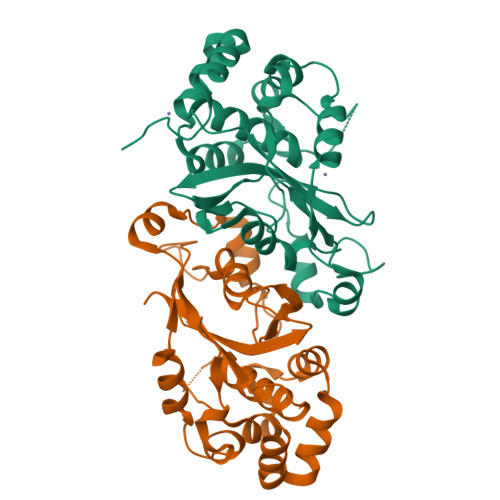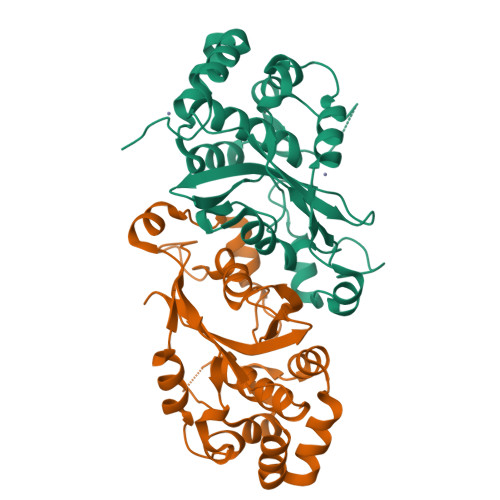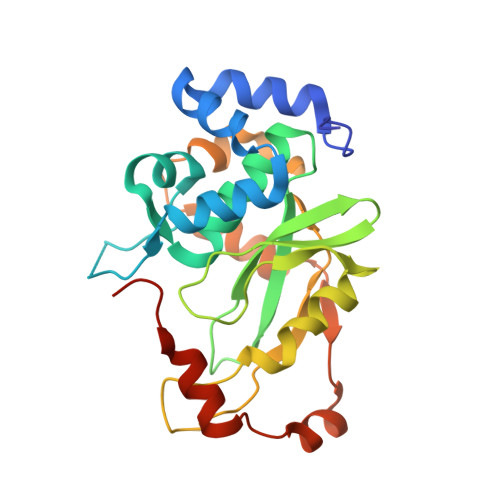CPR-C4 is a highly conserved novel protease from the Candidate Phyla Radiation with remote structural homology to human vasohibins.
Cornish, K.A.S., Lange, J., Aevarsson, A., Pohl, E.(2022) J Biological Chem 298: 101919-101919
- PubMed: 35405098
- DOI: https://doi.org/10.1016/j.jbc.2022.101919
- Primary Citation of Related Structures:
7OB6, 7OB7, 7PJO - PubMed Abstract:
The Candidate Phyla Radiation is a recently uncovered and vast expansion of the bacterial domain of life, made up of largely uncharacterized phyla that lack isolated representatives. This unexplored territory of genetic diversity presents an abundance of novel proteins with potential applications in the life-science sectors. Here, we present the structural and functional elucidation of CPR-C4, a hypothetical protein from the genome of a thermophilic Candidate Phyla Radiation organism, identified through metagenomic sequencing. Our analyses revealed that CPR-C4 is a member of a family of highly conserved proteins within the Candidate Phyla Radiation. The function of CPR-C4 as a cysteine protease was predicted through remote structural similarity to the Homo sapiens vasohibins and subsequently confirmed experimentally with fluorescence-based activity assays. Furthermore, detailed structural and sequence alignment analysis enabled identification of a noncanonical cysteine-histidine-leucine(carbonyl) catalytic triad. The unexpected structural and functional similarities between CPR-C4 and the human vasohibins suggest an evolutionary relationship undetectable at the sequence level alone.
Organizational Affiliation:
Department of Chemistry, Durham University, Lower Mountjoy, Durham, County Durham, United Kingdom.

















